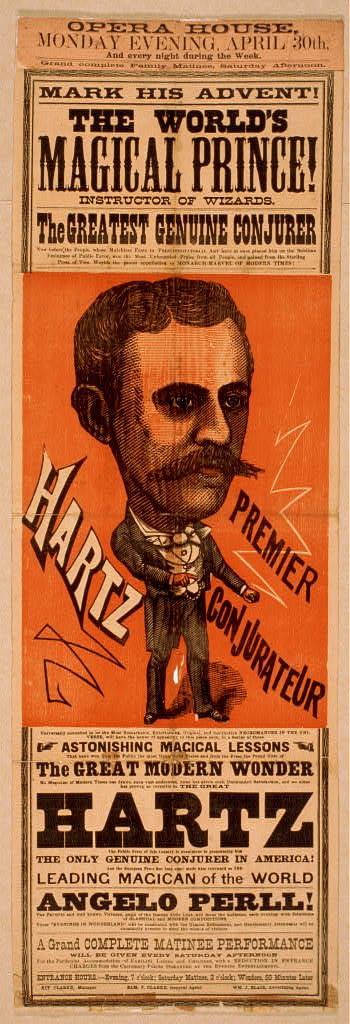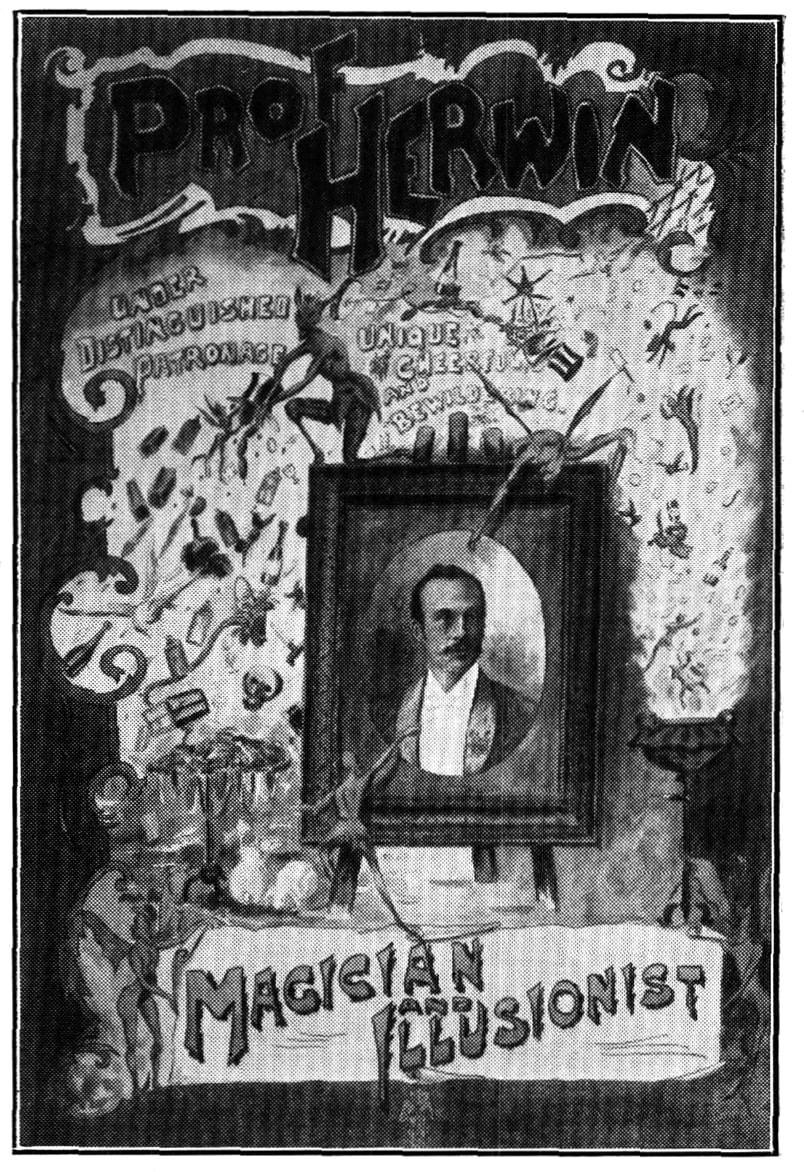Who Invented the Thumbtip?
Over the past one-hundred-and-fifty years, several magicians have been credited with inventing the thumbtip. It’s such a simple prop that it is understandable that multiple magicians could have thought along the same lines. As we’ll discover, it’s quite likely that the true inventor has been lost in time due to heresy and incorrect crediting, but, we have been able to track it down to one of two candidates.
The story is best told working backwards. Therefore, we start with Professor Hoffmann who credited the invention of the thumbtip to British magician Joseph Hartz (sometimes written as Hertz). In Later Magic (1904), Hoffmann wrote that an "Appliance of Hertz's for handkerchief production (invented, by the way, long before the false fingers came into use) was a sort of thimble, made of very thin copper, and arranged to fit over the end of the thumb, which it was modelled and coloured to resemble exactly."

Joseph Hartz was a British-born magician who performed, amongst many other places, at the Adelaide Gallery in London in 1859. He and his brother Gus emigrated to America where they opened what was possibly America’s first ever magic store, the Hartz Magic Repository on Broadway in New York City. Hartz sold his business in 1876 and returned to England with his American wife in 1881.
In Victorian Magic, Geofrey Lamb writes that Hartz was, “no inventor at all but something of a showman and very much a smart and pushing business man.” Even Hoffmann wrote in his book Magical Titbits that, “He was a great conjurer, but a poor showman. He had neither the presence, the voice, nor (be it said in a whisper) the genial impudence which are half the stock-in-trade of the successful entertainer. Like the proverbial Scotchman, he ‘joked with difficulty.’ His ‘patter’ had a laboured air, and he lacked that easy bonhomie which at once puts David Devant or Howard Thurston on good terms with his audience.” And in The Wizard (November 1909), Charles de Vere wrote that Hartz “bought all he could and invented very little.”
One man who wrote to deny those claims was William Humpage, who performed under the pseudonym of Professor Herwin (and if your name was “Humpage,” wouldn’t you change it too?!). He wrote: "Having been acquainted personally with Hartz, and witnessed his performance on many occasions, I quite agree with Prof. Hoffmann, that he was one of the greatest modern magicians.”
Humpage had purchased an effect invented by Hartz called “Devil of a Hat” and improved it. In this effect, the performer would produce numerous items from a borrowed hat, including a bowl of water and goldfish, and wait for it ... a wig! The entire act lasted eighteen minutes and was invented by Hartz in the 1890s after returning to the UK. Hartz had toured the trick throughout the UK and Europe and later sold his original props to Professor Herwin through C.O. Williams of Cardiff.
Humpage was born in Birmingham in 1861 and moved to Bristol in his early twenties where a family friend introduced him to magic. He eventually purchased a copy of Hoffmann’s Modern Magic (a predecessor to the Hoffmann book mentioned earlier) and then began to perform locally in the Bristol area.

Professor Herwin was an engineer by trade and eventually started to create his own magic tricks and gimmicks. One of them is the classic Siberian Chain Release (although that particular prop has also been claimed by P.T. Selbit) and a coin vanish in a brass box. He made many props for such famous magicians as Harry Houdini and Chung Ling Soo. It seems that during this time, Herwin also invented a thumbtip, this confusing the issue further of who invented the thumbtip. Was it Professor Herwin or Joseph Hartz? The final clue comes from December 1934 issue of The Magic Wand magazine:
“A recent visit from Prof. Herwin, of Bristol, recalls the fact that he is the inventor of that useful gadget the thumbtip. Some time prior to 1885, Prof. Herwin, attaching a scrap of silk to the inside of a false finger, devised the well-known proof that a silk is in the hand when the mouchoir has really disappeared. Then he thought of the thumb tip and it was one of the early models, if not the earliest, which was shown to us on its way to the museum of The Magic Circle, where that fake, which has helped to make many a magical reputation, now reposes.”
Therefore, it is possible that Joseph Hartz invented the idea of attaching a silk to the inside of a fingertip style gimmick (as claimed by Hoffmann in Later Magic) and his friend Professor Herwin acquired the gimmick and adapted it to a thumbtip (as claimed in the above quote from The Magic Wand) to create a sleight of hand vanish.
Herwin’s thumbtip is now on display in "The Inner Sanctum" of The Magic Circle Museum in London, where it sits discreetly on the back of a display shelf. The color of the thin copper has now become dark brown, almost black, yet it remains its detail, including a realistic thumbnail. The thumbtip was donated by Professor Herwin himself, along with some of Joseph Hartz’s props.
The final word comes from past president of The Magic Circle and magic historian Scott Penrose, who probably has the most level-headed viewpoint:
“While it's plausible that Hartz, and not Humpage, was the first to craft and use for magic performance what we now call the thumb-tip, we may never know the truth. It's possible that Hartz and Humpage each attempted - knowingly or innocently - to take credit for an idea that wasn't actually theirs. It's possible that Hartz and Humpage discussed the concept together and came up with the idea as a team. It's possible that this device was in use by magicians even earlier, and that the secret was kept so successfully that there is no record of its existence. Again, it's possible - in fact it's probable - that we'II never be certain of the truth.”
Need a thumbtip? We have a whole range of them here.
